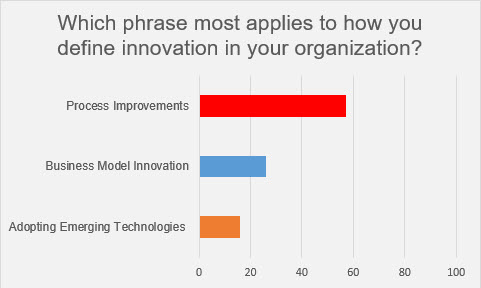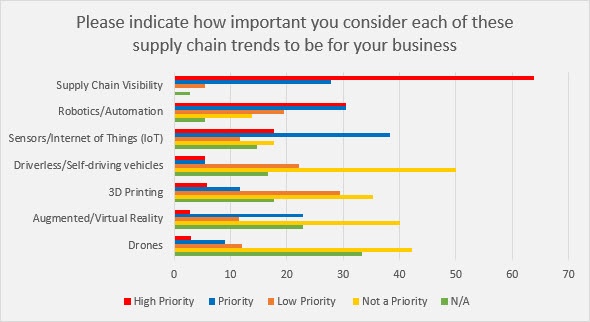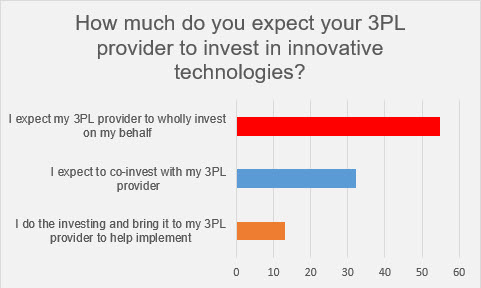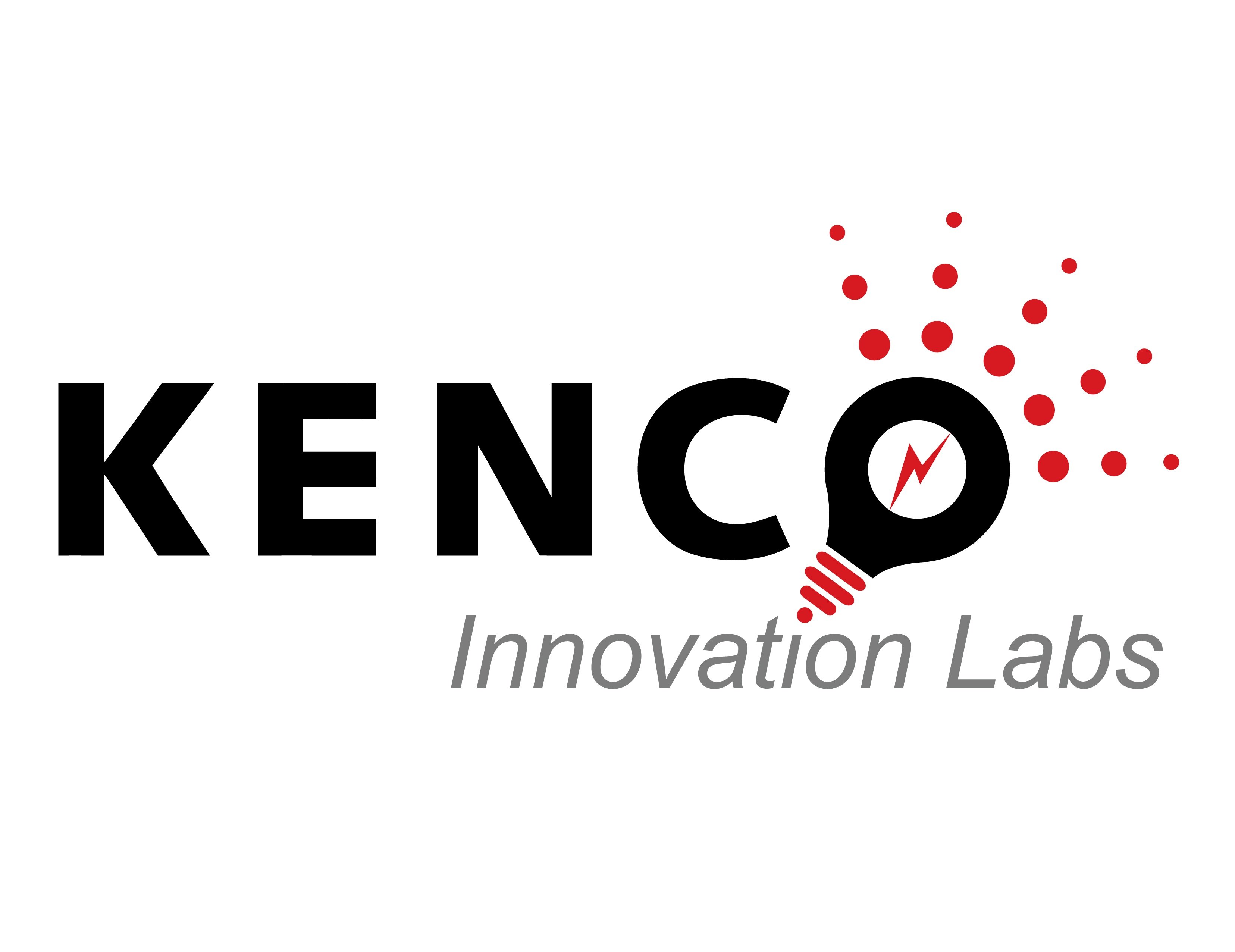From Amazon drone delivery to Uber’s self-driving trucks, supply chain innovations are always making headlines. The media and the public are excited about these “innovations of the future” – and we in the industry are as well. Supply chain leaders know the headline-making technologies of tomorrow – such as drones or augmented reality – have the potential to address the complex logistics issues of today, and many of us keep a finger on the pulse of these new technologies.
But awareness and interest are not the same as adoption. For all the attention they’re getting, how many supply chain leaders are actually using these new technologies and solutions? And are they tapping the insights of their 3PL provider to remain on the forefront of innovation?
To answer this, we recently surveyed supply chain leaders from a range of industries, and from organizations of all sizes, to get a deeper understanding of how they define innovation, which technologies they think will have the greatest impact on the supply chain, and what their plans are for the future of innovation in their companies.
Defining Innovation in the Supply Chain
First, we must define what innovation means to different supply chain leaders. According to the survey, for nearly 85% of these respondents, “innovation” in their organization is defined as “process improvements” or “business model innovation.”

This is an interesting point: while most chatter in the industry suggests all companies have their eyes on flashy new technologies, this data signals that what is most important to supply chain leaders are new technologies and solutions that can have incremental but impactful changes TODAY in their supply chains.
This bears out throughout the survey. Digging deeper into the specific types of innovation they want to invest in, it remains clear supply chain leaders are currently taking a more measured approach in adopting new solutions for their supply chain. When asked which areas leaders are planning to invest in, the top three areas of interest are:
-
Supply chain visibility (83%)
-
Robotics and Automation (58%)
-
Sensors/IoT (42%)
However, many of the headline-making innovations – like drones (8%), augmented reality (8%) and driverless vehicles (14%) – ranked lowest on the list.

Interestingly – but perhaps not surprisingly – these responses mirror the maturity of each technology: this graph could just as accurately be labeled “The length of time each of these innovations has been in the market.” The innovations that are recognized and tested are more attractive to supply chain leaders, and while they certainly have their eyes on the newest emerging innovations, there is clearly a more measured approach to adoption there.
This is also evident when leaders were asked about how important each of these technologies is for their business: 64% deemed supply chain visibility as a high priority, while drones (42%) and driverless vehicles (40%) were equally indicated as not a priority (at least, for now).

Not Innovation for the Future, but Innovation for Today
What does this tell us? Despite the promise that the future holds and their interest in progress with emerging technologies, supply chain leaders are most interested in adopting innovation for TODAY, which includes some proven technology and the emerging solutions that are easier to prove such as IoT. Working with such a finely tuned supply chain – and with so much on the line – they can’t afford to take a gamble on a new technology that might slow down their processes – or fail entirely. They want to adopt new solutions that have been tested, with a proven ROI. Of course, this is where partnering with your 3PL comes in, as we’re taking on the risk for you.
We’re testing the different innovations on your behalf to provide you with an educated and practical use case for these technologies both today and in the future.
At Kenco, we label this as core, adjacent or transformational innovation – as outlined in the Harvard Business Review. Supply chain visibility is a core innovation, as it is currently being improved upon and implemented to optimize and streamline the supply chain – and shouldn’t be overlooked, as it’s a priority for companies of all sizes. However, adjacent and transformational innovations – technologies that have the potential to transform or completely upend an industry, like robotics or driverless cars – hold a different kind of weight: one of much promise, but a slower approach to adoption.
While transformational innovations are lower on the business priority list currently, it’s important for them to be on the radar of supply chain leaders, and especially the radar of 3PL providers as they generally lead to new revenue streams.
The Best of Innovation is Yet to Come
Of course, what is new today quickly becomes outdated – and the technologies of tomorrow will be mainstream before too long. While supply chain leaders are spending dollars on technologies that they can confidently implement at scale today, with the expectation of reliable and immediate ROI – that doesn’t mean we shouldn’t keep our compass pointed north: it’s equally important to keep an eye on innovation for tomorrow. The technologies that are not as high of a priority at this moment (such as drones and driverless cars) may soon rise through the ranks and become a priority – and possibly a necessity – to remain competitive in the supply chain industry.
This will occur as emerging technologies begin (and continue) to become more tested and reliable – a task your 3PL can take off your shoulders. In fact, 94% of survey respondents feel that it’s important for their 3PL provider to have a competency in technology and innovation, and more than half expect their 3PL provider to be investing in innovative technologies (another 32% want to co-invest). Even more so, supply chain leaders are looking to their 3PL to be thought leaders on innovation and educate them on growing industry trends.
As 3PL providers, it’s essential for us to not only offer these innovations but be in the know; to have the information needed to share recommendations for our customers and answer any questions that might come up, whether they are about innovative technologies for today or those of the future.

Supply chain leaders will likely struggle to pinpoint the savings when looking to implement future innovation and emerging technologies. How are people measuring their ROI for innovation investment? How can supply chain leaders position an intriguing argument to their C-suite and board, boasting the benefits of innovation and emerging technologies? Partnering with an innovative 3PL is a beneficial step.
Innovation at Kenco
At Kenco, we’re spending money on innovative and emerging technologies so others can see the clear benefits and ROI for investing. At Kenco Innovation Labs, we think differently inside the supply chain box to solve current problems and leverage existing technologies to create solutions in innovative ways. From wearable IoT devices to robotics, we remain on the forefront of both innovation for today and innovation for tomorrow.
Kenco Innovation Labs must straddle the line between innovation for today and innovation for tomorrow. Our research spans the breadth of emerging technologies to provide deep expertise on supply chain impact. We do so for the benefit of our customers, knowing that soon, things like the drones we’re testing and experimenting with today will one day be a fleet deployed in a client’s warehouse – and we will be with them every step of the way.
Learn more about Kenco Innovation Labs and our Innovation for Today approach: https://kencogroup.com/kenco-innovation-lab/
{{cta(‘d532c395-c720-4fb4-b345-8b69098155f1’)}}

